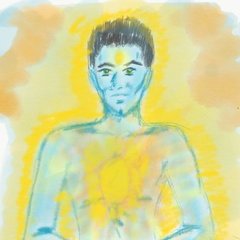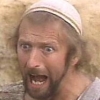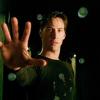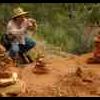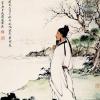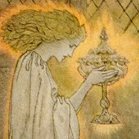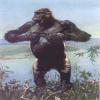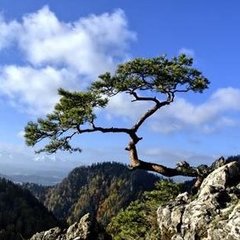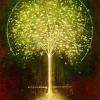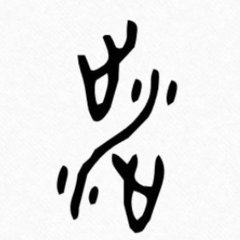Search the Community
Showing results for 'Dream'.
Found 7,590 results
-
One of my main practices is exactly this - feeling space. We work with it in several ways - feeling stillness in the body, hearing silence in the speech and sound, feeling spaciousness in the mind and heart. Working with dream and sleep also relate to this - being lucid in dream and changing the dream gives rise to more freedom for change in waking life where things generally feel so solid there is less confidence in the ability to change. Experience of awareness in dreamless sleep gives another level of depth to the experience of "feeling space." The result is to ultimately be more focused on the observer than the observed and in turn to be focused on the inseparability of the observer/observed experience. The implications relate to the very existence of the observer and the observer/observed duality that we accept as reality. I read a wonderful quote recently by Anthony Demello - Silence is not the absence of sound, it is the absence of self.
- 161 replies
-
- 7
-

-
- non dualism
- advaita
-
(and 1 more)
Tagged with:
-
As a child I roomed with an older brother I had the upper bunk and once dreamed I was falling. I was rudely awakened by contact with the floor. An applied lesson in gravity or a lucid dream?
- 161 replies
-
- 2
-

-
- non dualism
- advaita
-
(and 1 more)
Tagged with:
-
An illusory dwai, walked into an illusory tree and got an illusory broken nose. It is no different from a sleeping dream. Only thing is, we are afraid for this waking dream to end, thinking it is the end of us. It is not...when we die, we just wake up from the waking dream
- 161 replies
-
- 2
-

-
- non dualism
- advaita
-
(and 1 more)
Tagged with:
-
Row, row, row your boat,Gently down the stream. Merrily, merrily, merrily, merrily, Life is but a dream. Thing is, it is impossible to prove otherwise. There is no refutation of "it's an illusion" which cannot be simply said to be part of the illusion. We are left with observation of apparent reality, in which the reality of said apparent reality is truly moot. We can (and do) attempt to measure and formulate and model and predict in hopes of better understanding the parameters and mechanisms of our corner (in both time & space) of this apparent reality but, truthfully, we can do no more than that. Curiously, the more we explore beyond that which is obvious (deeper, higher, bigger, smaller, faster, slower, more massive, less massive, hotter, colder, whatever), the more bizarre and unlike the obvious our explorations suggest those parameters and mechanisms to be. We certainly aren't going to get far here; we've got folks who don't accept the concept that the rock exerts a force on your foot which is equal and opposite to the force your foot exerts on the rock. "If the doors of perception were cleansed..."? Yes, perhaps.
- 161 replies
-
- 6
-

-
- non dualism
- advaita
-
(and 1 more)
Tagged with:
-
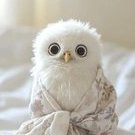
So what's the deal between qigongs and dreams?
doc benway replied to qicat's topic in Daoist Discussion
Hi qicat, I'm happy to share some thoughts. Our minds generate everything we see, everything we think, everything we are, in their interaction with surrounding conditions. If I pay attention, I notice all sorts of thoughts, images, impression, and internal dialogues arising throughout the day. Even how we interpret and experience things we assume are 'outside' ourselves - sights, sounds, smells, tastes... It's all a reflection of our mind. Where does this all come from? Our experience, desires, aversions, memories, unresolved conflict, and so forth. Same thing for dreams - they are just that same activity of the mind occurring during sleep. Everything we encounter, everything that affects us, will play out in our dreams. Meditation and qigong both open us to a deeper connection to ourselves - repressed and suppressed emotion and memories will come up as our practice deepens and strengthens. My Daoist meditation master said one of the benefits of practicing meditation is that it allows us to face and work through this stuff while we are young and healthy. He said that eventually everyone must face it all and most people face it without training or preparation when they are frail, sick, and close to death. He used to attribute the extremely high rate of suicide in the elderly to this part, in part. So I would suggest that it is normal to dream and it is expected that your dreams will reflect your daily life. Adding meditation and qigong to your life will potentially lead to richer, more intense dreams, and it is likely that you will face deeper and potentially more disturbing things that you've hidden away. Over time, if your daily life becomes more well-adjusted, more peaceful, more at ease through these practices, your dreams will as well. I practice yogas of dream and sleep. In dream yoga, we train ourselves to recognize we are dreaming in the dream and to take control of the dreamscape. In learning to be in control in our dreams, we can similarly be in control of, and make changes in, our waking lives, often in ways we would not have thought possible. Sleep yoga focuses more on examining and experiencing the process of transition between waking and sleep. It usually passes in an instant, in ignorance, with no memory, and yet as we learn to observe the transition it is seen to be a gradual, multi-layered, and fascinating process of dissolution of the self. It is thought to be somewhat similar to the dissolution experienced at the time of death. With practice, we can ride our awareness right into sleep and rest in the experience of perfect clarity and awareness in deep sleep, in the absence of dreams. This is thought to be very similar to the first Bardo encountered in death (there are several). Recognizing this in sleep can make us more likely to recognize our true face in death which is said to be a door to liberation from the cycles of samsara. Edited to add a few words about energy - One explanation from the Tibetan tradition is that the genesis of a dream is a combination of a subtle "wind" (Tibetans use the word wind, subtle movement of energy, to describe what others call prana or qi) interacting with an energy center or chakra. Since we carry our emotional life in our chakra system, the chakra that is stimulated will determine the nature of the dream. In practicing dream yoga, one method is to focus on specific chakras and generate visualizations in that chakra as we fall asleep. This allows us to influence the type of dream we are likely to have (this is divided into categories like peaceful, wrathful, and powerful). So as our energetic life changes through qigong, naturally our dreams will reflect this. -
There are neither hopes nor needs of the absolute nondual. Needs and hopes are predicated by thought. There can not be any "seeing through" consciousness. Because consciousness is not a thing to be seen through. If one chooses to bend space and time, their "choice" is predicated by thought and perception, thereby a projected illusion. That, imho, is not liberation. That is akin to lucid dreaming, where one becomes aware of dream and can control the elements in the dream. Liberation is akin to waking up from a dream (in this case, waking up from the waking dream of the universe). That's all I wanted to share with you, as this point seemed Unresolved
- 161 replies
-
- 1
-

-
- non dualism
- advaita
-
(and 1 more)
Tagged with:
-
Hi, Everyone! Finishing up the works of Nan Huai Chin in this post. Diamond Sutra Explained Paperback – January 27, 2005 Description: Master Nan Huai-Chin's discourses on the treasured Buddhist Diamond Sutra bring together a lifetime's personal cultivation experience that crosses into every single school of esoteric and spiritual practice. The great contemporary Master uses the Diamond Sutra as a tool to gauge the understanding that we must have when journeying towards understanding our true selves. The various passages from this beautiful Sutra are used to provide the student with a practical framework that combines understanding with practical cultivation. Master Nan's teachings are uniquely different compared with interpretations given by other contemporary and past teachers. Comments: Haven't read this one yet. I'm planning on reading Red Pine's translation first, then Master Nan's commentaries. Here's a link to the Red Pine (aka Bill Porter) translation: https://www.amazon.com/Diamond-Sutra-Red-Pine/dp/1582432562/ref=pd_sim_14_8?_encoding=UTF8&pd_rd_i=1582432562&pd_rd_r=F1NX122EVMVCM2W0GENS&pd_rd_w=uxZD3&pd_rd_wg=Ga9BH&psc=1&refRID=F1NX122EVMVCM2W0GENS I'm of the opinion that you should always read the original text first, in the best translation that you can find, before reading anyone's commentaries. I want as close to the original author's words as possible, free of any distortions. This book has a very Interesting history. Here's an article from Smithsonian.com that touches upon it for the layperson: Original Link: http://www.smithsonianmag.com/smart-news/Five-things-to-know-about-diamond-sutra-worlds-oldest-dated-printed-book-180959052/ Five Things to Know About the Diamond Sutra, the World’s Oldest Dated Printed Book By Jason Daley "No one is sure who Wang Jie was or why he had The Diamond Sutra printed. But we do know that on this day in 868 A.D.—or the 13th of the 4th moon of the 9th year of Xiantong in Jie’s time—he commissioned a block printer to create a 17-and-a-half-foot-long scroll of the sacred Buddhist text, including an inscription on the lower right-hand side reading, “Reverently made for universal free distribution by Wang Jie on behalf of his two parents.” Today, that scroll is housed at the British Library and is acknowledged as the oldest dated printed book in existence. Chances are you know a little something about the Gutenberg Bible, the first book made with moveable type, which came along almost 600 years later. Bibliophiles might also have a working knowledge of other famous manuscripts like the Book of Kells, The Domesday Book, and Shakespeare’s First Folio. Well, The Diamond Sutra should be in that pantheon of revered books, as well. Here’s why: Origins The text was originally discovered in 1900 by a monk in Dunhuang, China, an old outpost of the Silk Road on the edge of the Gobi Desert. The Diamond Sutra, a Sanskrit text translated into Chinese, was one of 40,000 scrolls and documents were hidden in “The Cave of a Thousand Buddhas,” a secret library sealed up around the year 1,000 when the area was threatened by a neighboring kingdom. In 1907, British-Hungarian archaeologist Marc Aurel Stein was on an expedition mapping the ancient Silk Road when he heard about the secret library. He bribed the abbot of the monastic group in charge of the cave and smuggled away thousands of documents, including The Diamond Sutra. The International Dunhuang Project is now digitizing those documents and 100,000 others found on the eastern Silk Road. Content The Diamond Sutra is relatively short, only 6,000 words and is part of a larger canon of “sutras” or sacred texts in Mahayana Buddhism, the branch of Buddhism most common in China, Japan, Korea and southeast Asia. Many practitioners believe that the Mahayana Sutras were dictated directly by the Buddha, and The Diamond Sutra takes the form of a conversation between the Buddha’s pupil Subhati and his master. Why is it Diamond? A full translation of the document's title is The Diamond That Cuts Through Illusion. As Susan Whitfield, director of the Dunhuang Project explains, the sutra helps cut through our perceptions of the world and its illusion. "[W]e just think we exist as individuals but we don’t, in fact, we’re in a state of complete non-duality: there are no individuals, no sentient beings,” Whitfield writes. Why did Wang Jie commission it? According to Whitfield, in Buddhist belief, copying images or the words of the Buddha was a good deed and way of gaining merit in Jie’s culture. It’s likely that monks would have unrolled the scroll and chanted the sutra out loud on a regular basis. That’s one reason printing developed early on in China, Whitfield explains. “[if] you can print multiple copies, and the more copies you’re sending out, the more you’re disseminating the word of Buddha, and so the more merit you are sending out into the world,” she writes. “And so the Buddhists were very quick to recognize the use of the new technology of printing.” What is one quote I should know from The Diamond Sutra? It’s difficult to translate the sutra word for word and still catch its meaning. But this passage about life, which Bill Porter, who goes by the alias "Red Pine," adapted to English, is one of the most popular: So you should view this fleeting world— A star at dawn, a bubble in a stream, A flash of lightening in a summer cloud, A flickering lamp, a phantom, and a dream." Here are excerpts from a Wikipedia article on it: Original Link: https://en.wikipedia.org/wiki/Diamond_Sutra "The Diamond Sūtra (Sanskrit: Vajracchedikā Prajñāpāramitā Sūtra) is a Mahāyāna (Buddhist) sūtra from the Prajñāpāramitā, or "Perfection of Wisdom" genre, and emphasizes the practice of non-abiding and non-attachment. The Diamond sutra is one of the most influential Mahayana sutras in East Asia and is a key object of devotion and study in Zen Buddhism... ..."The Sanskrit title for the sūtra is the Vajracchedikā Prajñāpāramitā Sūtra, which may be translated roughly as the "Vajra Cutter Perfection of Wisdom Sūtra." In English, shortened forms such as Diamond Sūtra and Vajra Sūtra are common. The title relies on the power of the vajra (diamond or thunderbolt) to cut things as a metaphor for the type of wisdom that cuts and shatters illusions to get to ultimate reality. The sutra is also called by the name Triśatikā Prajñāpāramitā Sūtra (300 lines Perfection of Insight sutra). The Diamond Sūtra has also been highly regarded in a number of Asian countries where Mahāyāna Buddhism has been traditionally practiced. Translations of this title into the languages of some of these countries include: Sanskrit: वज्रच्छेदिकाप्रज्ञापारमितासूत्र, Vajracchedikā Prajñāpāramitā Sūtra Chinese: 《金剛般若波羅蜜多經》, Jingang Banruopoluomiduo Jing (Chin-kang Pan-Jo-p'o-lo-mi-to Ching); shortened to 《金剛經》, Jingang Jing (Chin-kang Ching) Japanese: 金剛般若波羅蜜多経, Kongō hannya haramita kyō, shortened to 金剛経, Kongō-kyō Korean: 금강반야바라밀경, geumgang banyabaramil gyeong, shortened to 금강경, geumgang gyeong Mongolian: Yeke kölgen sudur Vietnamese: Kim cương bát-nhã-ba-la-mật-đa kinh, shortened to Kim cương kinh Tibetan: འཕགས་པ་ཤེས་རབ་ཀྱི་ཕ་རོལ་ཏུ་ཕྱིན་པ་རྡོ་རྗེ་གཅོད་པ་ཞེས་བྱ་བ་ཐེག་པ་ཆེན་པོའི་མདོ།, Wylie: ’phags pa shes rab kyi pha rol tu phyin pa rdo rje gcod pa zhes bya ba theg pa chen po’i mdo"... ..."The Vajracchedikā Prajñāpāramitā Sutra contains the discourse of the Buddha to a senior monk, Subhuti. Its major themes are anatman (not-self), the emptiness of all phenomena (though the term 'śūnyatā' itself does not appear in the text), the liberation of all beings without attachment and the importance of spreading and teaching the Diamond sutra itself."... This article also contains a chronology of the various English translations. The most recent one is by Paul Harrison. Here's a link to it. The English translation is on the far right: https://www2.hf.uio.no/polyglotta/index.php?page=fulltext&vid=22&view=fulltext I provided all of this background because The Diamond Sutra is a primary cultivation text. Always good to have the background, and a decent translation to start with, so that you then have a foundation with which to read commentaries, like the one by Master Nan. Basic Buddhism: Exploring Buddhism and Zen Paperback – November 1, 1997 Description: Hong Kong-based Zen Master Nan Huai-Chin is regarded as one of the foremost experts on Chinese history and culture. He is an expert in Confucianism as well as of Zen, Taoism and Esoteric Buddhism. This comprehensive introduction covers the relationship between Buddhism and the culture of India, the transmission of Buddhism to China, and to the rest of the world, and the changes that have taken place in Buddhism in different parts of the world - in other Asian countries, as well as in America and Europe. Comments: Haven't read yet, but here's the table of contents: CHAPTER 1: Buddhism and the Culture of India The Development of Indian Culture; The Background of Indian Culture; The Religion and Philosophy of Ancient Indian Civi- lization; The Rise of Various Philosophical Trends; The Six Schools of Philosophy; The Buddhism of Shakyamuni versus non-Buddhist Paths; Chapter Summary. CHAPTER 2: Shakyamuni Buddha, the Founder of Buddhism Shakyamuni's Lineage; A Great Man Who Refused to be King; The Dates of Shakyamuni's Birth and Death; The Clan Tradition; Legends of Shakyamuni's Innate Spiritual Unique- ness; A Special Youth of Many Talents; Shakyamuni's Compas- sionate Temperament; Leaving Home and Awakening to the Path; The Young Prince Who Fled the World to Seek Enlight- enment; Shakyamuni Studies the Various Schools for Six Years; Shakyamuni Practices Six Years of Austerities; Shakya- muni Opens through in Sudden Enlightenment and Achieves Buddhahood; The Founding of the Teaching; Shakyamuni's Teaching and His Original Disciples; Preaching the Dharma; The Compilation of the Buddhist Scriptures; Chapter Sum- mary. CHAPTER 3: The Transmission of Buddhism to China The First Period of the Transmission; Indian Buddhism in the Time of King Ashoka; The Initial Transmission of Buddhism to China in the Late Han and Three Kingdoms Periods; Buddhism in the Wei, Jin, and Northern and Southern Dynasties; The Founding of Pure Land Buddhism; Kumarajiva and Sengzhao; Daosheng, Nirvana, and Buddha-nature; The Heyday of Chi- nese Buddhism; The Sui and Tang Periods; The Founding of the Tang Dynasty; The Zen School's Change of System; The Rise of Esoteric Buddhism; The Song, Yuan, Ming, and Qing Periods; Chapter Summary. CHAPTER 4: Buddhism in Other Countries Buddhism in Asia; Korea; Japan; Burma; Thailand; Vietnam; Tibet; Other regions of Southeast Asia; Buddhism in Europe andtwo partAmerica; Britain; Germany; France; United States of Amer- ica; Russia; Chapter Summary. CHAPTER 5: Buddhism in the 20th Century The Decline of Chinese Buddhism Since the Qing Period; Sec- tarian Decline; The Change in the Character of Monks and Temples; The Buddhist Revival of the Late Qing and Early Republican Periods; The Revival of Chinese Buddhism; The Development of Chinese Buddhism; Conclusion. APPENDIX: The Zen Monastic System and Chi- nese Society The Different Societies of Eastern and Western Civilization; The Differentiation of Patriarchal Clan Society; The Early Bud- dhist Monastic System; The Origin of the Zen Monastic Sys- tem; The Zen Monastic System: Its Regulations and Guide- lines; The Abbot; The Two Echelons of Monks; The Responsible Posts in a Zen Temple; The Chief Administrators, Visiting Monks, and the Pure Congregation; Variations in the Zen Pure Rules Over Time; The Influence of the Zen Commu- nities; Equality of Status and Collective Living; Equality of Labor and a Prosperous Economy; Equality of Faith and Disci- pline in Speech and Action; Equality of All Sentient Beings; The Zen Halls: Cultivation of Practice; The Scope of the Zen Hall; The Teacher in the Zen Hall; Life in the Zen Hall; Teaching Methods Inside and Outside the Zen Hall; The Transformation of the Zen Hall; The Legacy of the Zen Community Pure Rules; Zen Master Baizhang's Biography; Zen Master Baizhang's En- lightenment; Preface to the Pure Rules of Baizhang by the Song Dynasty Literatus Yang Yi; Twenty Essential Rules for the Zen Community by Zen Master Baizhang; The Treatise of the Samadhi of the Precious King; The Zen Community and Patri- archal Clan Society; The Zen Monastic System and Chinese Culture; The Zen Monastic System and the Secret Societies; Closing Comments. Index About the Author Working Toward Enlightenment: The Cultivation of Practice Paperback – November 1, 1993 Description: In this important and fact-filled treatise for contemporary students, Master Nan Huai-Chin details the principles and practices behind the various schools of self-realization. Many Westerners have biases regarding works by Confucius and Mencius; even contemporary scholars misunderstand the philosophical approach that covers the spiritual cultivation path to enlightenment- the practice involved in attaining realization. Comments: Part one two-part magnum opus on the cultivation process. Haven't completely read yet. Here's the table of contents: TABLE OF CONTENTS Introduction...... vii 1 The Path of Cultivating Enlightenment........................ 1 2 Mind and Extemal Form.............................................. 19 3 The Five Skandhas...................................................... 41 4 Liberation from the Skandhas..................................... 57 5 A Talk on The Lotus Sutra........................................... 83 6 Further Lessons from The Lotus Sutra .......................103 7 Cultivation through Refining the Breath...................... 115 8 The Cultivation Path of Mindfulness ...........................131 9 Breathing and Various Ranks of Cultivation Attainment ....................................145 10 Refining the Vital Energy ...........................................163 11 Teachings of the Zen Patriarchs as a Basis for Cultivation..................... 179 12 Correctly Contemplating Mind.................................. 197 13 Stories of Zen Enlightenment.................................... 223 14 True and False Emptiness......................................... 247 Works Cited.................................................................... 279 lndex............................................................................... 283 To Realize Enlightenment: Practice of the Cultivation Path Paperback – October, 1994 Description: This is a series of lectures translated from the Chinese on the cultivation of enlightenment in the Buddhist religion by Master Nan Huai-Chin. Topics include correcting mind, body, and behavior, Samadhi, five Skandhas, etc. Comments: Haven't read this one yet (only so many hours In a day ). Read this one after reading "Working Toward Enlightenment". Here's the table of contents: TABLE OF CONTENTS Preface.............................................................................. vii Eliminating the View of the Body...........................................1 Correcting Your Mind, Body, and Behavior ........................20 Cultivating Genuine Samadhi .............................................47 An Overview of Cosmic Realms..........................................67 The Sequence for Transforming Mind and Body.................83 Samadhi and the Realms Resembling Samadhi.............. 105 Zen School Models for Cultivating Samadhi.................... 129 Entering, Abiding, and Leaving Samadhi......................... 155 The Four Intensified Practices.......................................... 173 Bodhisattva Practices....................................................... 199 The Five Skandhas ............................................................225 Liberation from False Thought........................................... 241 Contemplation on Provisional Existence........................... 261 Carrying Out Vows............................................................ 279 Works Cited...................................................................... 303 Index................................................................................. 305 The Story of Chinese Taoism No Image available Description: If you want to learn Taoism, you truly cannot afford to miss out on this information from the man who re-established Taoist understanding in Taiwan and Mainland China Discover materials on Chinese Taoism that include correct meditation practice principles, the history of Taoism, gong-fu explanations ... and honest advice ... from a recognized Taoist master! Hard to find info on the founders of Taoism, history of Taoism, Taoist religion, Taoist meditation practice and more. China's only surviving tripartite Zen, Esoteric and Taoist master ... who has sold over seven million books in China ... recounts the history of Taoism and the principles of proper Taoist meditation practice. Inside you'll find fully comprehensive explanations of Taoism along with recommended methods and results of body-mind cultivation. For the first time in English, Nan Huai-chin's Taoist breakthrough insights are available to true Taoist seekers. Inside this work, which is the other half of The Story of Chinese Zen, published by Charles E. Tuttle, you will find discussions of Lao Tzu, Chuang Tzu, Wei Bo-Yang, fang-shih (or ancient "magicians" of China), the Yin-Yang school, kundalini, pranayama, chi, Taoism and the sciences, feng shui, Confucianism, medical longevity sciences, I-Ching, popular Taoist meditation methods and all the major topics of Taoism, including a trustworthy history of Taoism with critical analysis (something missing in most texts). You will find information on the battles Taoism fought with Chinese Buddhism and Confucianism. This is a veritable treasure trove of Taoist practice insights and history, and more importantly, it contains the proper road of meditation practice according to the real Taoism that has all but disappeared from the world. What Master Nan teaches is different than any other Taoist information you can find today as he weaves practical experience together with Taoism history of practice, and proper meditation technique. In your hands you'll have Chinese Taoism details - never before available in English - that illuminate a safe and correct road of meditation practice according to the correct Taoist vision. The translator, Dr. William Brown, once spoke to me about this text saying, "I've translated Nan Huai-Chin's works on both Confucianism and Taoism. You know the scholars say one thing about these fields, and he says another, and frankly, to tell you the truth, his revolutionary ideas are right and they're wrong!" That's why the author has sold over 7 million books in Asia, and is widely recognized as the premier Chinese authority on Taoism today. Scholars typically write dry books without any experience of the matter they're discussing, but this one seamlessly weaves a master's interpretations of facts and trends together with meditation principles and personal insights to provide you with guidance for your own spiritual efforts, even if you don't follow Taoism. In fact, the whole purpose of the book is to help you practice better by understanding how body-based cultivation schools (such as Taoism, yoga, Tantra, and Tibetan Buddhism) should be practiced correctly. With this sensational information in your hands you will avoid many of the detours discarded by ancient Taoist practice ... but popularized today by uninformed teachers. Now you can challenge them yourself using this material. Having met dozens of Taoist practitioners who hurt themselves because they thought they understood things, I have to say that what they were lacking was Nan Huai-chin's insights! At last you have a chance to have them yourself without having to learn Chinese, travel to Asia, and then spend years collecting the same sort of information. To understand more about Chinese Taoism and body-mind cultivation -- and even tantra techniques, yoga, kundalini cultivation, pranayama and Tibetan Buddhism because of their similarities of practice and shared materials -- there's nothing better than first grabbing a copy of Tao and Longevity for your own personal practice, and then a copy of The Story of Chinese Taoism to understand the broader principles and framework of Taoist practice along with the evolution of Taoist philosophy and cultivation methods. Inside this work you will find many translated source materials that you won't find in any other English publication. Furthermore, you find Taoist trends and fads put into the right perspective along with discussions of their pros and cons. This is the information that lets you reach the highest stages of Taoist cultivation. Because Taoism focuses on body-mind cultivation, you need this book to deepen your knowledge of practically any school of cultivation that focuses on the body and discusses physiological changes due to climbing the spiritual ladder. It will definitely teach you what you must do in your own spiritual practice to become a "true man," the perfected individual, and to claim all the other benefits and virtues of Taoist practice. Comments: This one is available for free download on Bill Bodri's Meditation Expert website. Original link provided above. Haven't read it yet. Table of contents provided below: Introduction Chapter 1: The Origins of the Learning and Thought of the Taoist School and Those of Huang-Lao and Lao-Chuang · The Relationship of the Taoist School with Huang-Lao · The Relationship of the Taoist School and Lao-Chuang Chapter 2: The Relationship of the Thought of the Recluse and the Taoist School · Counter-Evidence to the Legends of Ancient History · The Relationship of the Thought of Confucius and the Recluse · Relationship of the Recluses and Historical Politics Chapter 3: The Learning of the Fang-shih (Occultist) and the Taoist School · Early Natural Sciences · The Yin-Yang School Evolved Into the Humanities · Theoretical Physical Sciences Chapter 4: Origins of the Learning and Thought of the Fang-shih in the Taoist School · Ancient Traditional Culture and the Taoist School During the Chou Dynasty · Cultural Background of the Northern Chinese States of Ch'i, Lu, Yen and Sung During the Warring States Period · The Culture and Thought of the Southern State of Ch'u During the Warring States Period Chapter 5: Contents of the Learning and Thought of the Taoist School and Taoist Religion · Cosmological Theories of Heaven and Man in the Taoist School and Taoist Religion -- The Concept of the Yin and Yang -- The Concept of the Five Elements -- The Concept of Sixty Year Cycle Using the Heavenly Stems and Earthly Branches · Learning and Thought of the Cultivation of Immortals in the Taoist School · Estimation of the Meaning of Human Life by the Taoist School and Taoist Religion The Influence of the Thoughts of the "Fang-shih" (A) The theories and methods on the cultivation of the spirit were naturally first advocated by Lao Tzu (B ) The first theories of the cultivation of ch'i and the refinement of ch'i © The reasons for the taking of drugs (D) The two theories related to the taking of alchemical drugs (E) The three types of alchemical drugs ingested (F) The three methods for ingesting alchemical drugs (G) The cultivation and practices of the sect of worship and prayer Chapter 6: The Immortal Alchemical Sect During and After the Han and Wei Dynasties · The Originator of Alchemical Texts Wei Po-Yang · The Alchemical Method of Refining Ch'i and Nourishing Life Through the Combination of the Medical Sciences of the Fang-shih and the Representations and Numerology of the Book of Changes Chapter 7: General Discussion on the Thoughts of the Founders of the Taoist School and Taoist Religion · The Meaning of "Heaven" Prior to the Split of the Confucian and Taoist Schools · The Meaning of "Tao" Prior to the Split of the Confucian and Taoist Schools · Lao Tzu -- The Concepts of the Way of Heaven, Non-Action and Spontaneity in the Thought of Lao Tzu -- Lao Tzu's Views on Benevolence, Righteousness and the Sage -- Misunderstanding of Lao Tzu's Political Thought -- Lao Tzu Has Been Falsely Charged as the Instigator of Schemes and Intrigues -- The Focal Point of Lao Tzu's Political Thought -- Lao Tzu's Theories on the Cultivation of Life (A) The cultivation of quietude begins with attaining utmost emptiness and internal stillness (B ) The cultivation of the spirit proceeds from utmost stillness to being dimly visible as if not present © The cultivation of ch'i is designed to aid the cultivation of stillness and the spirit (D) Realizing that which is shadowy and indistinct (E) The results of the cultivation of life ·The Classic of Purity and Stillness · Chuang Tzu -- The Fables in the Chuang Tzu -- Chuang Tzu's Free and Easy Wandering and the Seven Inner Chapters -- The Style of the Outer Chapters of the Chuang Tzu -- The Mutual Causation of the Ideas of Caring for Life in the Chuang Tzu and the Fang-shih Immortals · The Influences of the Yin-Yang School and Fang-shih of the Warring States Period · The Learning and Thought of Tsou Yen -- The Motives and Aims of Tsou Yen's Theories on Yin and Yang -- The Contents of the Yin-Yang Theory -- The Geophysical Thought of Tsou Yen -- The Prevalent Trend of Learning in the State of Ch'i · The "Fang-shih" of the States of Yen and Ch'i and the Origins of the Thought of Immortals During the Ch'in and Han Dynasties · Emperor Ch'in Shih Huang and the Feng and Shan Sacrifices · The Spirit Way and Spirit Immortals at the Beginning of the Han Dynasty · General Contents of the Learning and Thought of the Taoist School During and After the Han and Wei Dynasties Chapter 8: The Taoist Religion · Reasons for the Formation of the Taoist Religion at the End of the Han Dynasty · The Taoist School and Taoist Religion During and After the Chin and Wei Dynasties · The Taoist Religion During the T'ang Dynasty · The Taoist Religion During the Sung, Yuan, Ming and Ch'ing Dynasties Chapter 9: The Ideas of the Taoist School and Taoist Religion and the Educational Spirit of Chinese Culture The Story of Chinese Zen Kindle Edition Description: The development of Zen in China is really the story of the flourishing of Chinese philosophy, arts and literature beginning as far back as the Han Dynasty and earlier. Master Nan Huai-Chin offers an engaging chronicle of both in this groundbreaking work. The Story of Chinese Zen begins with the premise that the climate during Shakyamuni's founding of Buddhism in India ultimately influence the differences behind Hinayana and Mahayana thought, practice, and methods of seeking enlightenment. From there—beginning with its transmission to China—Master Nan outlines the Zen School, exploring influences on the development of Zen before the early Tang Dynasty, different meanings of studying Zen and pursuing the heart and goal of Zen." He explores the relationship between Zen and new-Confucianism and the inseparability of religion and Zen from Chinese literature and philosophy, especially Taoism. Born in Zhejiang province, China in 1918, Nan Huai-Chin has studied under thirty-two major Taoist and Buddhist masters, including the masters of the Esoteric School of Buddhism in Tibet, from whom he received the title of Esoteric Master. He has published over thirty books and is widely recognized as one of the foremost scholars on Zen and Taoism. Comment: Haven't completely read yet. Here's the table of contents: Table of Contents About the Author 1. Connections Between Buddhism and Historical Chinese Culture 2. A Brief Introduction To The Contents Of Buddhist Study Background of Indian Culture - Situations and Political Conditions of Ancient India 3. Contribution to Humankind Made by Shakyamuni's Leaving Home and Attaining Enlightenment Breaking Up Concept of Caste, Shakyamuni Preached Equality Extending to All Living Beings Shakyamuni Set Up a Phenomenology of Life, Recurring Cycles of Six Courses of Existence Shakyamuni Pioneered Views of the Universe and the World - Shakyamuni Synthesized a Metaphysical Ontology 4. Mahayana Buddhism and Hinayana Buddhism Hinayana Thought - The Practice of Hinayana Buddhism - Hinayana Methods of Seeking Realization 5. Mahayana Thought Mahayana Practice - Mahayana Methods of Seeking Realization 6. An Outline of the Zen School Zen and its Roots - Historical Traces of Zen - Special Transmission of Zen Outside of Buddhist Doctrine - The Work of Zen - Lankavatara Sutra to Seal Understanding of Penetrating Root Basis of Mind and the Universe 7. Influences on the Development of Zen Before the Early T'ang Dynasty 8. The Sixth Patriarch of Zen The First Issue - Step One - Step Two - Step Three - Step Four - Step Five - The Second Issue - The Third Issue 9. The Great flourishing of Zen in the Early T'ang Dynasty 10. Some Keys to Understanding Zen 11. Understanding Some Important Technical Terms Public Cases - Caning and Shouting 12. Important Points in Reading Zen Classics The Necessity of Preparatory Learning in Zen and Literature 13. The Heart and Goal of Zen 14. The Process of Zen: Mental Work and Insight 15. Nirvana and the Aim of Zen 16. Emphasizing Concentration on a Word or Saying Practice of Cessation and Contemplation, and Dhyana - Watching Thoughts - Investigating a Hua-t'ou 17. Doctrine of the Three Barriers and the Realm of Zen Investigative Meditation 18. Sources of Zen Buddhism's Influence on Neo-Confucianism 19. Neo-Confucianism and the Sayings and Doings of the Zen Masters 20. Zen and Chineses Literature 21. Importance of the Relationship of Zen and Literature Grass Mountain: A Seven Day Intensive in Ch'an Training With Master Nan Huai-Chin Paperback – May, 1986 Comments: No description. The title is self-explanatory. Haven't read yet. Here's the table of contents: Contents About the Master, vii Acknowledgments, ix Introduction, xi Prologue, xvii Day One, 1 Day Two, 15 Day Three, 37 Day Four, 53 Day Five, 69 Day Six, 89 Day Seven, 109 Glossary, 115 Bibliography, 131 Chinese Sources, 133 That's it for all of Nan Huai-Chin's books available in English. He has many more available, if you can read Mandarin. Even with my previous caveats, I still consider both his, and Bodri's works must reads, especially if you're new to all of this. Next is the Golden Elixir titles, and papers of Fabrizio Pergadio Cheers!
-
The point being, "opting" be a ruler sage in an dream world is no freedom. Just being, presence, is. I don't mean this in a snarky way. This will make things clearer I think -- https://youtu.be/df9YPTe14nU
- 161 replies
-
- non dualism
- advaita
-
(and 1 more)
Tagged with:
-
I'm reminded of a certain Kabbalic paradigm. It's not that there's one God in the universe. It's that the whole universe; all of time, thought, space and matter are within God's mind. We are.. (aspects within) God's dream. Personally such musings seem less valuable then the Dark Chocolate covered Espresso beans on my desk. Though both can keep me up on nights I indulge too deeply.
- 161 replies
-
- 6
-

-
- non dualism
- advaita
-
(and 1 more)
Tagged with:
-
If that is so. I can't help but think that's a little foolish. I enjoy the Tibetan idea that if we learn to become lucid in dreams we can continue to be lucid during the bardo after we die. I mean wouldn't a Taoist like to work on having clear dreams at least ? I could understand not flying around at night lucidily for entertainment. But if there are subconscious hang ups do Taoists just focus on their waking practice and feel things will work them selves out in dream
-
All this makes me want to get back into dream yoga. When you talk about the hormones in the pituitary and pineal gland. It reminds me that when I just lower my gaze in the middle of my brow. My forehead and brain start to vibrate. Is this what you mean ?
-
In zhong lu chuan dao ji (tl Eva Wong), carrying on from the perspective of refining the body - just one perspective of the tapestry - we hear something like this: This resonates with much of what is explored in Journey to the West, a book Liu Yiming holds as sacred and revealing of the celestial mechanism. An interesting distinction is made here between leaving the shell of the body behind to return to the ten continents, or not and living as long as heaven and earth. Another interesting parallel is that the Monkey King chose to remain in the body, yet was also able to access the ten continents. He was something of an anomaly, and needed a little ego refining, but from a different perspective, this brings to mind the bodhisattva vow. I do not know the answers, but a part of me envisions the possibility of bringing these realms back into closer proximity to each other, along with bringing all of the universe closer together into a dance of harmony that ultimately and completely returns the all of it to the dao that currently exists even beyond the reach of the ten continents. I have heard that these realms used to be closer within reach of us, whereby humans would stumble into it naturally from time to time. I can only imagine it is the lack of guarding unity as a whole by our species that has pushed it far away, along with pushing the universe further apart. The power of immortals who are able to access all realms seems key to holding it all together. If we are going to speak of goals, this a (perhaps naive) dream of mine. I have not finished reading Journey to the West however, so perhaps something in there will refine or change my perspective and this goal. I do not mean offense to any within the ten continents, I simply seek to nurture unity.
-

Seeing, Recognising & Maintaining One's Enlightening Potential
manitou replied to C T's topic in Buddhist Textual Studies
I think you may be imposing a moral question onto an amoral reality. In the big picture - no, it doesn't matter who lives and dies. It doesn't matter if one kills another. Once the guy is dead, he's just fine, consciousness remains. It's all the same thing - like a huge monster with a zillion appendages, losing one and gaining another. There is no good or bad attached to it, no moral judgment. This is a component of enlightenment. The dream in which we live, we have imposed morality. And there are consequences to our choices. You will sit in prison for a very long time if you kill another. And if you think of reincarnation as a possibility, then certainly the intent of the killing action will have consequence as to how you will return. It's neither good nor bad if you return as a worm. It just is. Even the idea of chloroform in print is adding a value judgment. -
Yen Hui inquired of Confucius, saying, "When Mengsun Ts'ai's {{A wise man of the state of Lu. Olai (p. 268). A deceitful minister of the tyrant Chow who was put to death together with his ruler by King Wu of the Chou dynasty.}} mother died, he cried without tears, his heart felt no distress, and during the period of mourning he felt no sorrow. Although lacking these three qualities, he was held to be the best mourner in the state of Lu. Can one really attain a name without the substance? I find this to be very strange." "The clansman Mengsun was so thorough," said Confucius, "that he had advanced beyond knowledge. Although he may have wished to simplify mourning, but wasn't able to do so fully, still there is that which he did simplify. Mengsun didn't know why he lived and didn't know why he would die. He didn't know which came first, life or death, and which came last. You see, he just went along with the transformation of things, awaiting the unknown transformation that was in store for him. Moreover, as we are about to undergo transformation, how do we know that we aren't already transformed? As we are about to cease transformation, how do we know that we have already transformed? Perhaps you and I are in a dream from which we have not yet awakened. He, however, had a vulnerable physical body but no damage to his mind, a patched-together lodge but no expenditure of his essence. Mengsun was singularly awakened. When others cried, he cried too. That's why he behaved himself as he did. "Moreover, people identify each other as 'I,' but how do we know that what we call 'I' may not really be 'I'? You may dream that you are a bird and streak across the sky, that you are a fish and descend to the depths. We cannot determine whether we who are speaking now are awake or dreaming. We may be so suddenly delighted that we don't have a chance to smile; we may break into a smile before we have a chance to arrange ourselves. Repose in what has been arranged for you and leave transformation behind, then you will be able to enter the unity of vast heaven.
-
when you focus your attention to reality, it is not really a reality, instead you shift your focus on left eye. From there you can shift to luminosity. that it feels tiring and exhausting is related to neck, throat, swallow. That is where also your food come in and if no food has come in you are doomed, so its specially important to make powerful friends and not show weakness. That said, in order to make your quests comfortable, then don't show how much you have but instead make yourself inferior. You will feel bad and under pressure but others will feel good. in awareness substance case, its originates from belly. This substance is needed to wake up from dream to waking life.
-
I had a dream last night where I was told to be a vegetarian... Where have you seen vegetarian tigers??? Me either... Dreams are weird. p.s. oh, and qigongs... last Saturday I got full dzogchen empowerment. VERY strong thing from the Tulku. And I thought you are allowed to eat meat in tantra...
-
It's a very interesting subjects dreams. When I was a teenager and I was doing lot of meditation and energetic exercises I experienced lucid dreams and OBE. I guess for Qi Gong practise is the same: where there is more energy in the body you have more dreams. Or to say it better, dreams are more powerful and there is the ability to remember them. As awaken said, another explanation could be that when you move lots of energy in the body-mind you also trigger and unlock physical-psychological blocks and tension that may be experience as dreams. According to essene tradition dreams are a way to practice in another dimension and can be a very powerful tool in the personal growth. I don't know if the Daoist canon the dream subject has been taken into account as would be interested to know what is it's point of view of it.
-
I agree with that. Teeth teeth teeth. Look at our teeth. It's certainly not meat eater teeth. I acknowledge the value of it as a supplement to an "ordinary" diet but... From a global vision meet is disastrous on every step, water, pollution, global human alimentation capacity, ethic, health, spiritual inclination. No wonder why there is so much fire people nowadays, for sure we got the fuel but nothing meaningful to do with it (as societies). But yeah eat it, go on we have to decrease I heard. About the B12 vitamin... It's the product of a bacteria that lives in the ground or in animal's stomaches. So it's naturally present on everything you grab from the ground and you don't wash. For the story since we fed betail we have to had B12 artificially in the meat. Eating meat everyday ahah it was all a dream!!! Why not champagne when we thirstay ?
-

Seeing, Recognising & Maintaining One's Enlightening Potential
manitou replied to C T's topic in Buddhist Textual Studies
I think there are two different ends of the spectrum. At one end is our sentient experience, the dream within which we have become fully engaged, the experience that has evolved to a societal code of conduct. This matter that we think we actually are, in reality, is a dream. Matter breaks down into atoms, atoms into the nothingness of ideation. For some unknown reason, we are the experiencers experiencing the experience in a mutual fashion. It is within this paradigm that such things as compassion and good and evil exist. The other end of the spectrum is the void. It is not linear, it's all here and now, it underlies all ideation and sense of what we think of as reality. It does not contain separation, and it does not care which of us lives and dies, as it is all the same thing anyway. It is the nothingness underlying potentiality. In this sense, things like compassion are not relevant. To use nature as a guide, nature is cruel in the sense that things eat and live on other things. Compassion in the wild is an aberration, perhaps a coincidence. I think we're talking about apples and oranges. Like quantum physics -we are both the particle and the wave. We are here and we are not here. We are all of it and we are none of it. In that sense, both aspects of morality are valid. -
But all Buddhas are the same. I.e. is the the same "being" manifested in physical (?) body. I have not "seen" Buddha ( perhaps because I am not looking?), but at ngondro retreat I got very clear understanding of the lineage of Guru Rinpoche Padmasambhava. I can 100% confirm that true lineage holders do carry "the seal". As a noob, I have no idea what was actually was going on, but I think it was an introduction to the lineage mandala. Where all Buddhas are the same Guru. Which from energy perspective ( how it felt) it made perfect "sense", although it is hard to describe with words. Also, every human ( sentient being) is a "buddha in making". I am finding it hard to believe one human/being can generate enough energy to pull all sentient beings out of samsara of six worlds. I am reading sutras and what I am getting is that it is encoded thing, that "offering millions of merit to every drop of Ganga which is a universe" will not release the beings, but putting mantra into their heads will. ( I.e. energy work vs. physically loading everybody's checking account with unlimited money, giving them their dream boy/girl, fulfullign every wish...) I.e. getting humans to a state of rigpa and showing them freedom from suffering is the actual Buddha work, not material stuff... p.s. I am curious to read this few month from now, I am sure my POV might change on this.
-
Awakening is usually termed in the context of dreaming, so at night you may dream you are this or that person having a variety of experiences, but then you wake up and in a few seconds you realise that it wasn't real and was a mental creation. Spiritual awakening is very similar in that you realise the person you thought you were is also a mental creation, so just as the person you create in the dream never wakes up you as a separate individual will also never wake up, rather you wake up from that to the realisation that you aren't that. Something else wakes up through you. So even if enlightenment happens it won't happen to you. But just because you have woken up from being a human it doesn't mean no suffering, what is left of the psyche can react in a multitude of ways including fear and terror. For example Suzanne Seagal wrote about her experiences in her book "Collision With the Infinite" and she clearly had an awakening but spent most of the rest of her life in confusion and fear. I personally did a retreat last year where one Finnish woman woke up and spent the two weeks crying and was as white as a sheet the entire time. There may be no suffering from the perspective of awake space but that doesn't mean that your entirety and all the different areas of your psyche shares this perspective. There may be no past or future from the perspective of awake space but all your survival conditioning passed down both genetically and karmically over hundreds of years/lifetimes isn't going to give up its grip so easily.
-

Hello, I'm someone with CFS trying to get better, and also understand meditative arts from a scientific perspective
Limahong replied to Deltrus's topic in Welcome
Hi Deltrus, Thank you for engaging with my posting. I like where you are coming from; seems like I have known you for a long time. Why? It appears that my domain can collapse into yours fairly comfortably and you will not kick me out. I bet that you are a living dualist. Why? Because you are both simple/complex. You have extra Buddhist seeds in your pockets? Can you give me some to reduce my suffering? Per the simple <=> complex continuum, I prefer to live more to the left.Will this make me a minimalist by your own definition? No thank you - I do not want to wait for 50 years to know certainty. You can keep it all to yourself. Why? Yesterday night Buddha appeared in a dream and told me to meditate on impermanence. PyL and PmDa. - LimA -
I obviously can't answer for Sifu Terry, but I had the exact same problem (used to get it with breath sequences as well - really annoying to drift off in the middle and forget which breath you're on then have to start over!). I've found over time that practice allows the mind to get better at subconsciously tracking the breathing and then movement, and it rarely occurs to me anymore. On the flip side, if you want to go into deep sleep/dream-like states during Flying Phoenix, try out Basic Seated #3. I'm not sure if it's a specific function of that particular meditation, or just that it's a seated meditation with no movement and thus facilitates the most mental relaxation, but I recently spent a month or so practicing it daily and had a few times where I drifted into rather intense dream-like states, complete with sound and visuals. The content of these "dream-states" wasn't random either, but always correlated with specific health issues. I've moved on to Basic Seated #2 for now, but at one point in the future, when my practice is a bit more advanced, I'm looking forward to trying an hour long sessions of Basic Seated #3 and seeing how deep it can go
-
I sometimes tap my head and tap my arms other than that no I'm not doing it as shown and I honestly still have big problems with horse stance too because it's the only time I don't feel qi. I can feel it when I seated, when I'm walking, running, with other people etc. But not in horse stance. I just feel energy in the palms of my hands during moving yin and yang. Other than that my mind is wrong, my breathing is wrong etc. So I don't think I'm even doing moving yin yang right anyway. When I do seated stuff I just feel the qi and start breathing wherever it is. My back is never straight and my head is bowed at roughly 50 degrees or more too. And then I open my eyes and take some deep breaths. I know that's wrong because when I open my eyes it's like waking up from a deep sleep even if I've only been doing it for 30/60 seconds. Sometimes my eyes don't even open properly right away and one of them might stay completely shut for a while! I opened my eyes the other day while I was breathing and it's like a totally different reality. A waking dream.
-
I realised a while ago after engaging with the topic of 'awakening' that I had what I would identify as an 'awakening' experience that lasted for a couple of days, brought on by a few weeks of acute distress (on top of years of milder level struggling) and a prayer asking for help. In a moment the pain that had become almost unbearable disappeared, and there was a blessed silence in my mind, and while carrying on with my day normally the condition remained. The next day I woke up and noted with mild surprise that this condition was still there, but either later that day or the next day I can't remember I 'saw' thoughts entering my perfectly clear mind and floating down, and these thoughts slowly increased like leaves piling up on the ground and clogged this state until I was back to normal, all in all the refilling with thoughts took a few minutes. I had a dream around this time where a wide pipe was flushed out with water a couple of times in quick succession, and it wasn't till a long time later that a constant stream of mud was flushed out of the pipe unendingly after which clear water started to fill a swimming pool from where this pipe stuck out from the bottom of the pool. So this was always going to be my way, and I didn't attempt to recreate this state because I was told so clearly that it would be a long time until it happened again, and that when it did clear water would then flow and fill the pool, which I now recognise as beingclear energy filling my heart. And in the meantime I have just gotten on with the work as I see it, looking at and clearing the emotional mud in my LDT for many years and for the last few years now looking at and clearing the ego superiority and inferiority in my heart, slowly clearing the way for this perfectly clear water to flow. To me this clear water is energy free of any contamination and completely unobstructed, able to fill and utterly transform my heart, which is why I have such absolute views. Looking at my personal experience there was a long way to go from the first taste of 'awakening' to embodying it absolutely, while energetically much has been achieved in the meantime which I find invaluable - I understand energy and the subtle energy body in ways that have enriched me and that I wouldn't choose to be without, things which no non-dual 'awakened' teacher is talking about. In a way it's like the teacher or guru who can give the student a taste of some state, but they have to make their own way to this place for it to stick, which is generally a lifetimes work. To cling to the intitial state would be counter-productive in my view, because it leaves so much depth unexplored and unrealised, and a multitude of 'pockets of ego' that Jetsun referred to.


